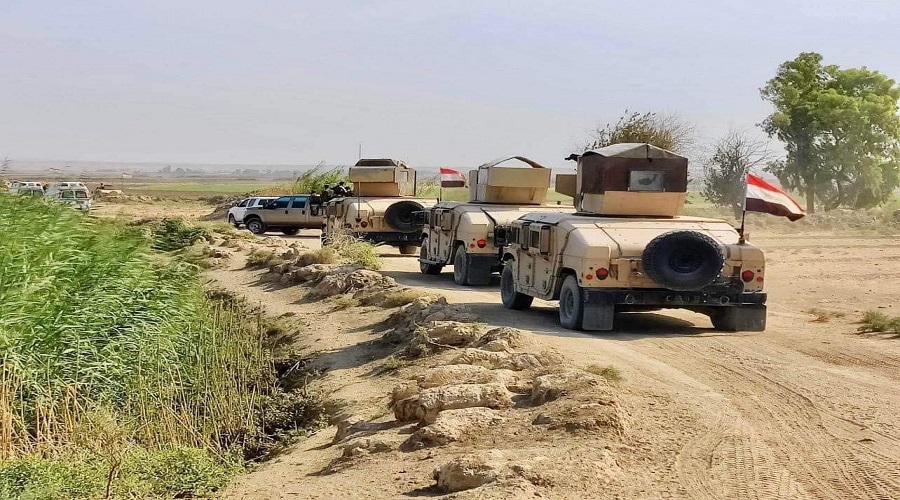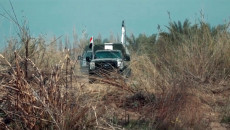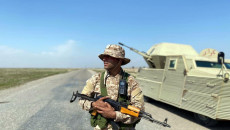“Recently, the security situation is improving. We as young people can go out freely at night and play football until late at night,” said Salam Najm, a resident of Qulay area in Khanaqin district. Northeast of Baghdad.
Qulay area includes about 28 villages and is located in the north of Khanaqin district of Diyala province.
Salam Najm says in their area, which is a mixture of Arabs and Kurds, they could not play football at night during the last five years and today they participate freely and without fear.
Coordination between the Iraqi army and the Peshmerga forces in Khanaqin is considered the main reason for the return of peace, after several years of separation, due to post-referendum conflicts and the events of October 16, 2017, which caused the Peshmerga to withdraw from Khanaqin and the disputed territories between Baghdad and Erbil.
"There have been no security violations in Khanaqin and Qulay area for six months and no terrorist acts have been recorded there," an officer of the Joint Military Center in Khanaqin told KirkukNow on the condition of anonymity.
"The security situation has improved due to the coordination between the Peshmerga and the army, which have advanced equipment and thermal cameras to monitor the movements of Daesh (ISIS), whenever they move will be targeted," the officer added.
A joint center of the army and Peshmerga has been established in Khanaqin and several other disputed areas for military coordination to track the remnants of the Islamic State of Iraq and Syria ISIS.
Khanaqin district in Diyala province in addition to Kirkuk, part of and Ninewa and Salahaddin, is part of the disputed territories that a three-stage process has been outlined in Article 140 of the Iraqi constitution in 2005 to put an end to Kurdistan Regional Government KRG and the Federal Iraqi government dispute over these areas.
Article 140 stipulates normalization, a population census and a referendum on the status of the territories, yet it has not been materialized up the preset, leaving the area in security gap, missing basic public services.

"The people of the area have a great role in assisting the security forces and warning them of suspicious movements," a lieutenant in the Iraqi army, anonymously told KirkukNow.
On August 18, the Peshmerga forces and the Iraqi army conducted a joint military operation in the northwestern areas of Khanaqin district towards Tuzk Kurmatu district, east of Salahaddin, to track down regrouping remnants of IS.
"The 3rd Infantry Brigade of the Peshmerga Ministry and the Iraqi army conducted a major security operation to drive out ISIS fighters in the border between the Peshmerga and the army in Khanaqin," a security source in the Peshmerga Ministry said.
The source said the Peshmerga forces and the army did not cross each other's borders and the anti-terror agency participated with the Peshmerga.
The Iraqi army and Peshmerga forces have a 560-kilometer-long border from Khanaqin in Diyala province up to Sihela in Ninewa.
"The coordination between the Peshmerga and the army has a positive impact on our region, so we call on the political parties not to make any statements that affect the current stability," Hemin Mohammed, a resident of a village in Qulay, told Kirkuk Now.
There are more than six forces in Khanaqin district, including the Iraqi army, Peshmerga, federal police, pro-Shiite Popular Mobilization Forces PMF or Al-Hashid Al-Shaabi, the (KRG) security forces and the internal police of the Iraqi Interior Ministry.
"ISIS fighters are fleeing the area after the activation of coordination, which can be seen in the recent joint operations conducted with the Peshmerga to eliminate armed movements in the district," an Iraqi army officer anonymously said.
Khanaqin District, home to 90,000 Kurds, Arabs and Turkmens, Sunnis and Shias, is part of Diyala province and is one of the disputed territories which extends from Khanaqin, on the border with Iran, to the northern oil-rich city of Kirkuk up to Shingal (Sinjar), home to the Ezidi community, in Mosul, in the far west, on Iraq-Syria borders.
Most of the disputed territories were under control of the Kurdish Peshmerga forces up to October 2017, when the Iraqi Security Forces ISF took over control of these territories following the defeat of ISIS.







